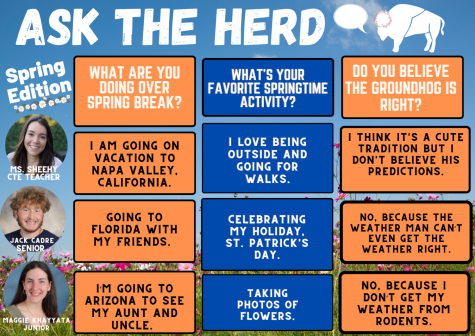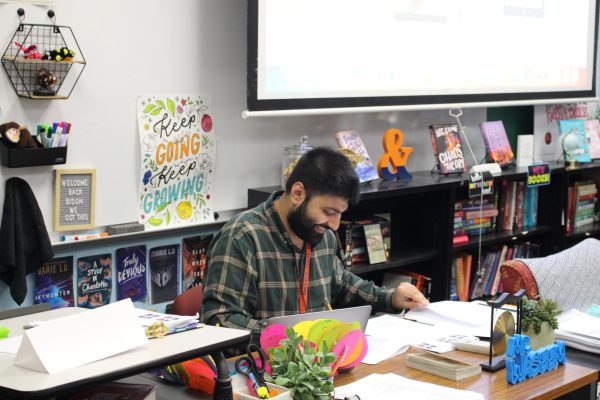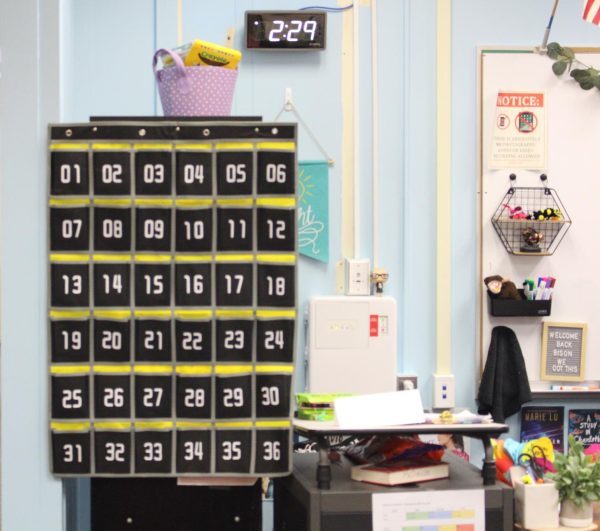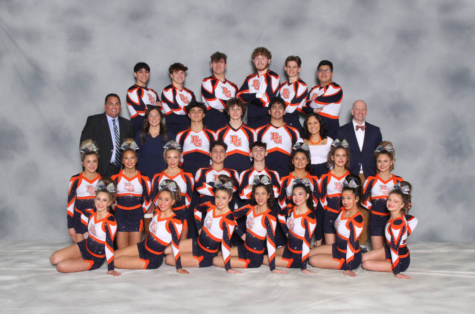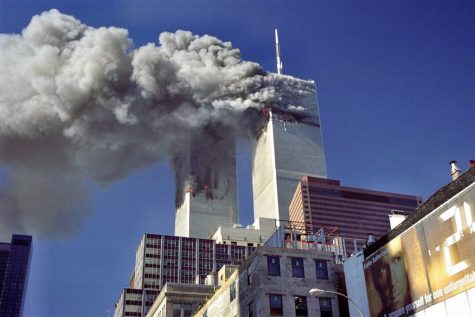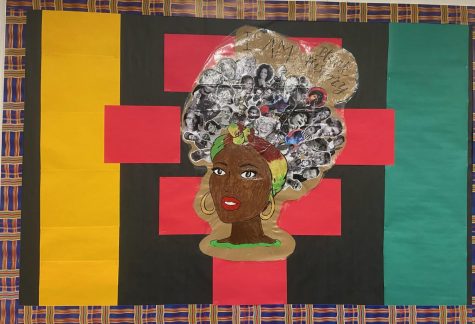Crowd Crush: Astroworld ends in fatalities
Disorderly conduct: Travis Scott has been known to incite riots and promote unruly behavior at his concerts. These behaviors finally caught up to him this past fall when his Astroworld Festival ended in multiple fatalities.
On Nov. 5th of 2021, over 50,000 fans arrived at the Astroworld Festival at NRG Park in Houston, Texas to see a variety of popular artists take the stage. The festival, which had the intention of being an event to bring Texans together, ended in eight on-the-spot fatalities and two more related fatalities in the days following, with the one of the dead being only 9 years old. According to attendees, these deaths were a result of a crowd surge that had become so condensed that people were unable to gasp for oxygen, being crushed between humans.
Celebrating its third year, the Astroworld fest was founded in 2018 by Houston native and Grammy-nominated rapper Travis Scott, and has occurred annually, though it did not occur in 2020 due to the COVID-19 pandemic. The event title itself is a reference to Scott’s third album of the same name, and takes place on the former site of Six Flags Astroworld amusement park, which Scott said was one of the most memorable places of his childhood. The festival was founded originally as a way of celebrating the 2018 album, and continued on to be an annual occurrence due to its great success.
“A wild week is upon us, but injecting the city with inspirational features and activities for charity is a must” Scott said in an Instagram post days prior to the festival. This positive attitude that Scott had created surrounding the festival, however, was seemingly short-lived as many fans brought their reckless attitudes with them as they entered the festival grounds.
While it’s typical for music festivals such as Astroworld to become rowdy, it’s unusual for these behaviors to occur to the extent that they did in this case. From the start, fans made it very clear that they were there to have a good time; not to follow rules. Video footage which circulated social media shows a large group of fans who broke down the barriers of the VIP entrance, and proceeded to stampede past the gate, bursting into the festival by the hundreds.
What happened during the performance, however, that actually resulted in the deaths was a phenomenon referred to as a crowd crush— or crowd surge. What happens in this scenario is that the crowd moves closer and closer to the subject of interest to become so tightly packed that people are unable to inhale oxygen, especially shorter individuals.
Subsequently, there is no room to move any limbs of the body, meaning that an individual has little to no control over their own movements, instead they are determined by the patterns of the rest of the crowd.
In an instance where just one person loses oxygen and falls to the ground, it could create a chain reaction among the crowd that leaves hundreds of people toppled to the floor unable to stand up. At Astroworld, where there people were passing out left and right, the amount of people falling over to the ground and getting trampled over can only be imagined.
Due to the nature of these crowd crushes, some attendees, mainly the ones who stayed to the far sides or far back from the stage were not affected by the crowd surges at all. Many of these people actually remained unaware of the disaster taking place in the crowd, until hearing about the news later that night.
Senior, Eric Tejedahas had his fair share of being in large crowds, as he attended all four days of Lollapalooza Festival this past summer and spent most of the time near the front of the stages.
“It’s very unforgiving to be in a mosh pit when you’re not a tall person who can hold themselves up, ” Tejeda said. “What happens a lot of the time is that when someone falls, they get helped up fast and very quickly are let out of the situation. At Astroworld, it seemed like people were more focused on the concert rather than the people.”
In a situation resulting in the deaths of many young and innocent concert goers, it’s only natural to wonder who should take the blame for the Astroworld disaster. Is it the security crew for their slow reactions and minimal efforts to help fallen fans, the festival organizer for not taking safety concerns into account, or is it Scott’s fault for not ending the show promptly and for encouraging raging?
Manufacturing and design teacher, Phil Tschammer, with many years of experience working on the technical side of medium and large-scale concerts and live performances, spoke on this issue.
“You’ve got multiple different people in charge, and each person may have a different viewpoint of what’s going on; what should run and what should not run,” Tschammer said. “It is hard to get a definitive decision in a short amount of time.You can’t just cut the music and cut the microphone and cut everything, because that is your emergency communication system to get everyone situated.”
A video that went viral on social media shows a young woman and man who had made their way to the top of a platform in an attempt to communicate with a cameraman that the show needed to be stopped since people had fallen dead. “There’s someone dead in there, there’s someone dead, someone’s dying!” said the women
“That [cameraman] who had done that live streaming may have gone into it thinking it would be another show just like every show they had done before” Tschammer said in regards to the situation with the unresponsive cameraman. “Maybe he just froze in that moment because of the severity of it”.
Based on Tschammer’s insight, it’s clear that it’s hard to pinpoint the fault to any one person or group of people, and instead realize that there were many factors that went into the fatal disaster.
“It’s that tough in between where you don’t want to create that much panic within the crowd but you also want them to stop, back up, and rethink what they’re doing in that moment of time,” Tschammer said.
One common issue with Scott is his habit of promoting rioting and wild behavior at his performances. In 2015, Scott encouraged fans to rush towards the stage and disregard security at a Lollapalooza performance, to which he got charged for disorderly conduct. In 2017 while performing in Arkansas, Scott did nearly the exact same, to which he was charged and pleaded guilty to inciting a riot.
This recurring issue ultimately paid its final price at Astroworld as human lives were lost as a result. While in this situation Scott never encouraged or incited this behavior directly, very little was done to stop it, and security generally seemed unprepared or at least overwhelmed.
As opposed to pointing fingers at the people who may have contributed to this preventable occurrence, it’s better to realize what this event meant as a wake-up call to live event coordinators and music artists.
“I think what they’ll take away is that they need to find a way to manage crowds better,” Tejeda said.



